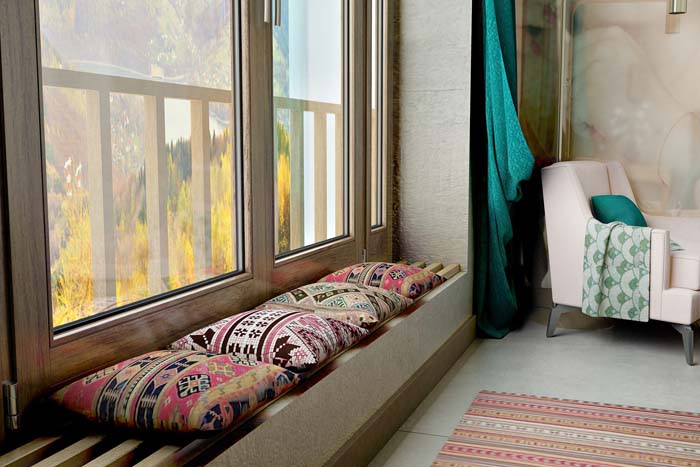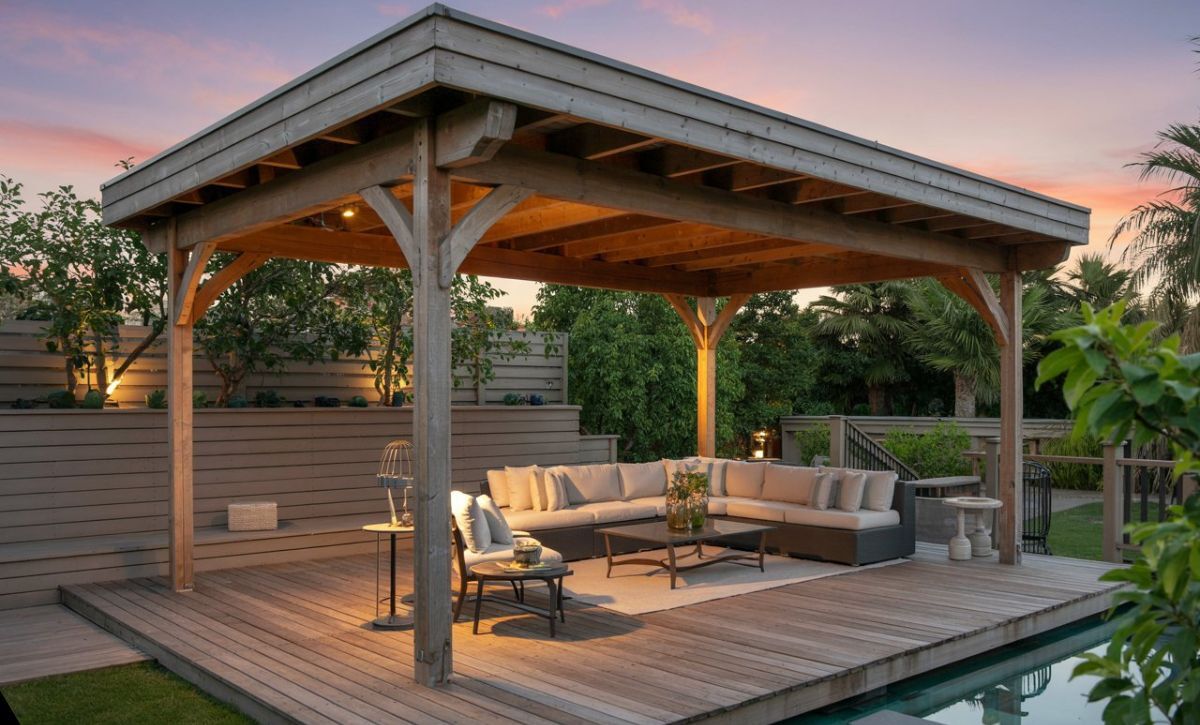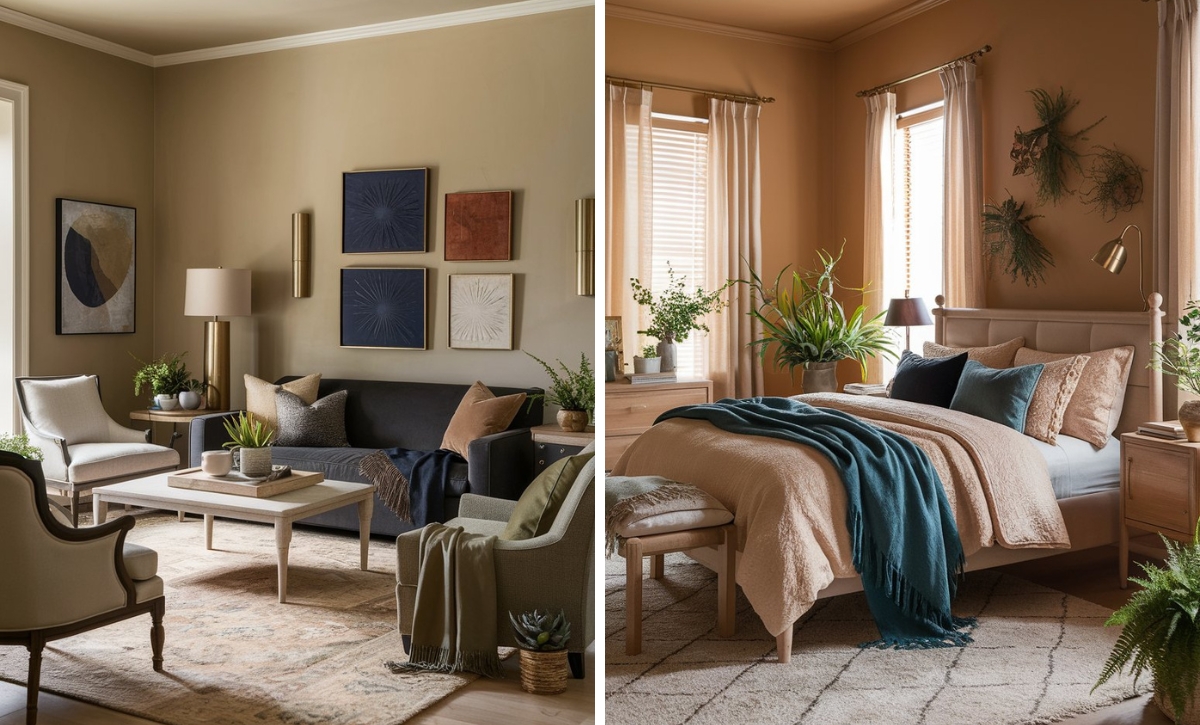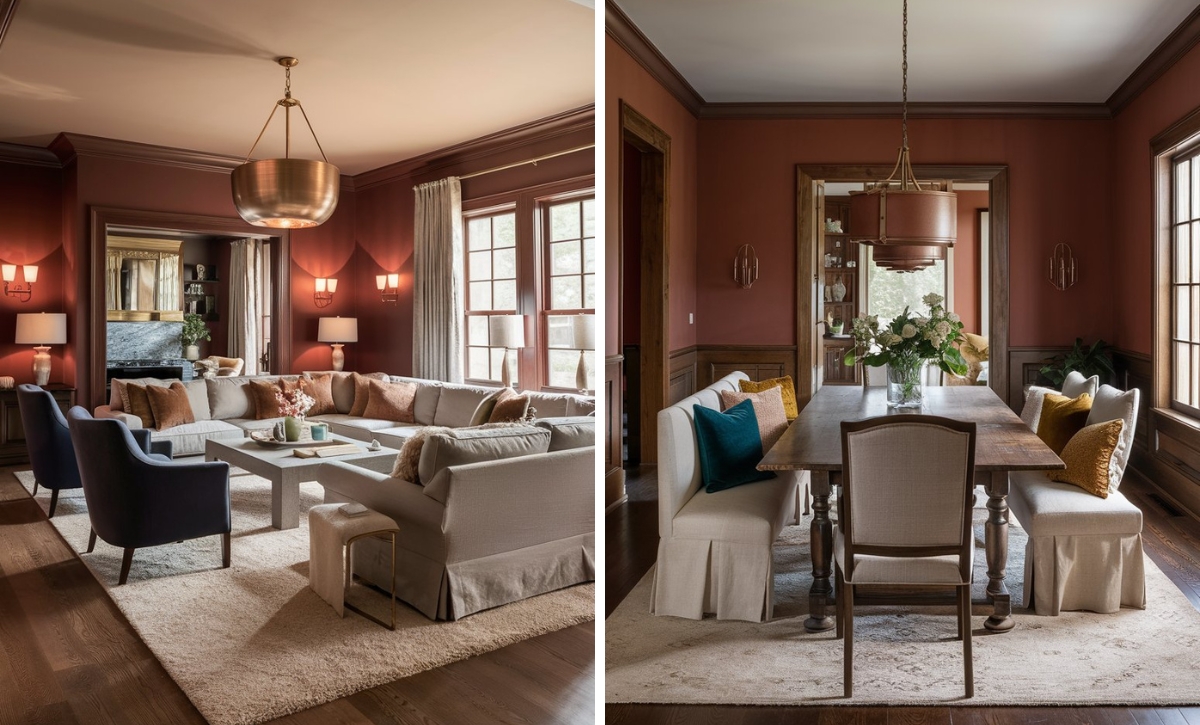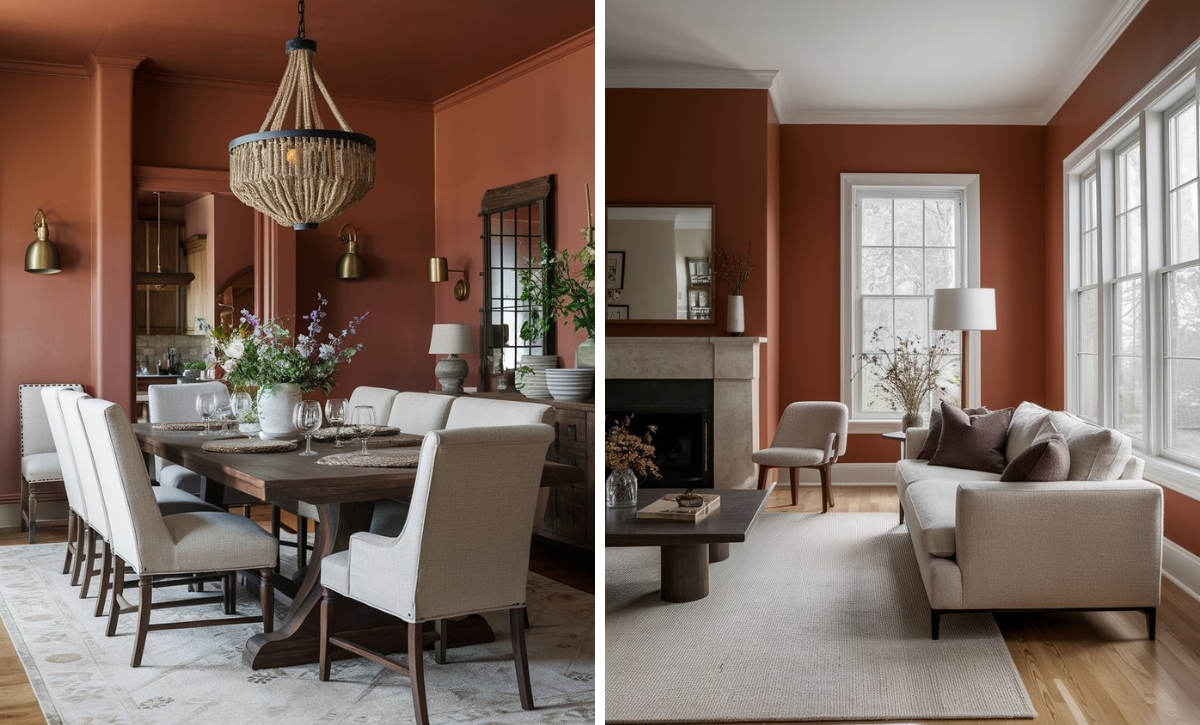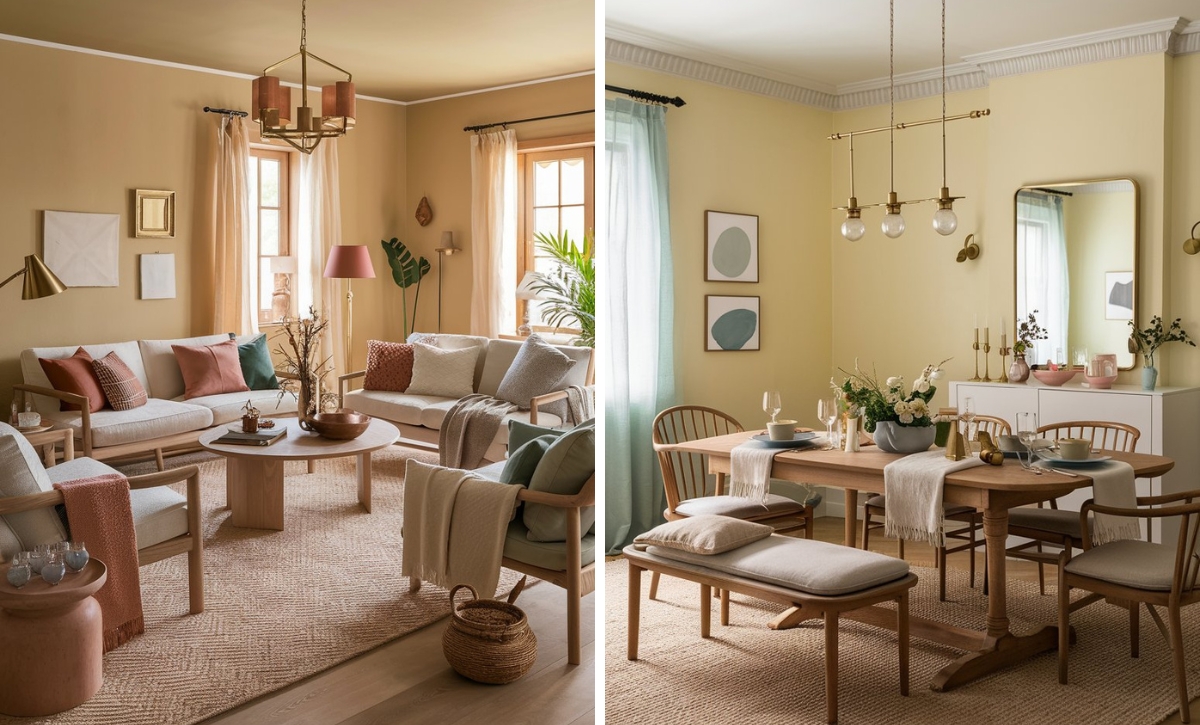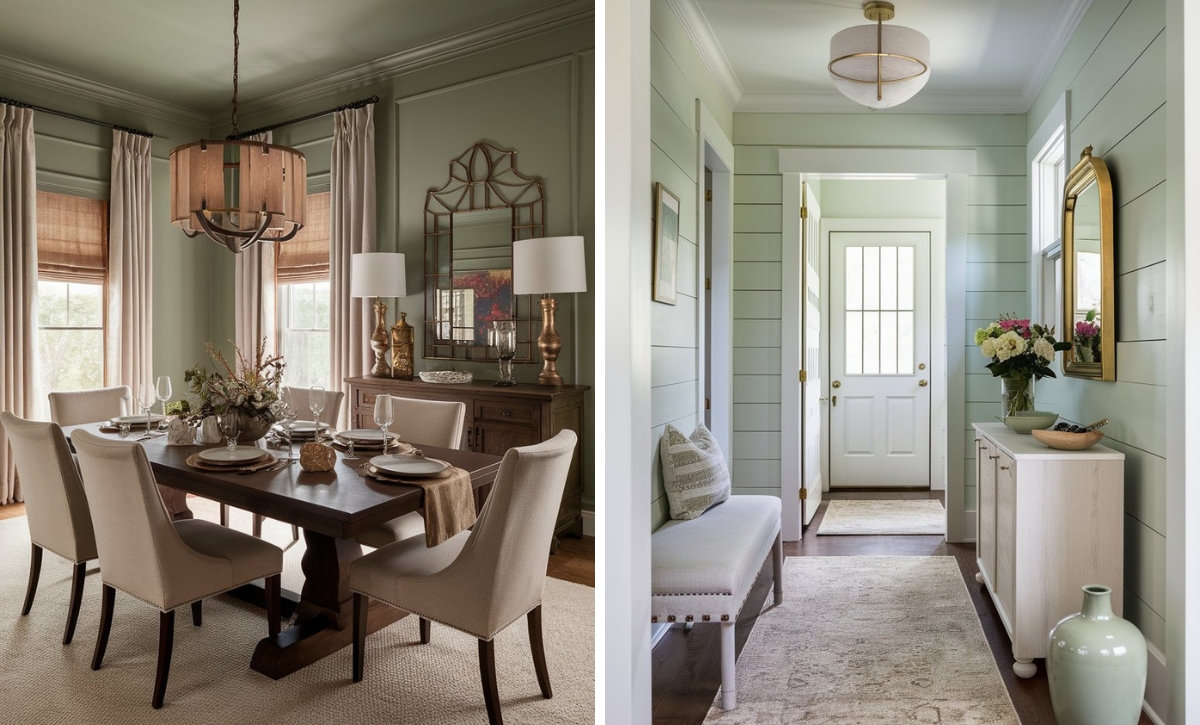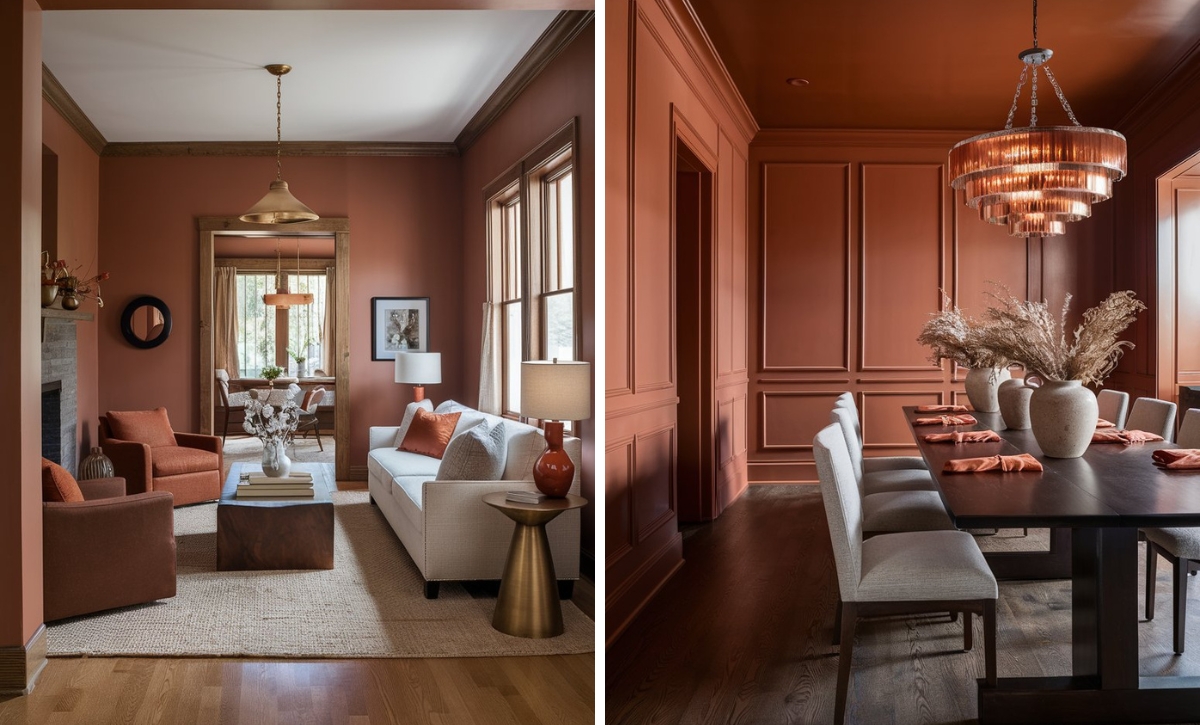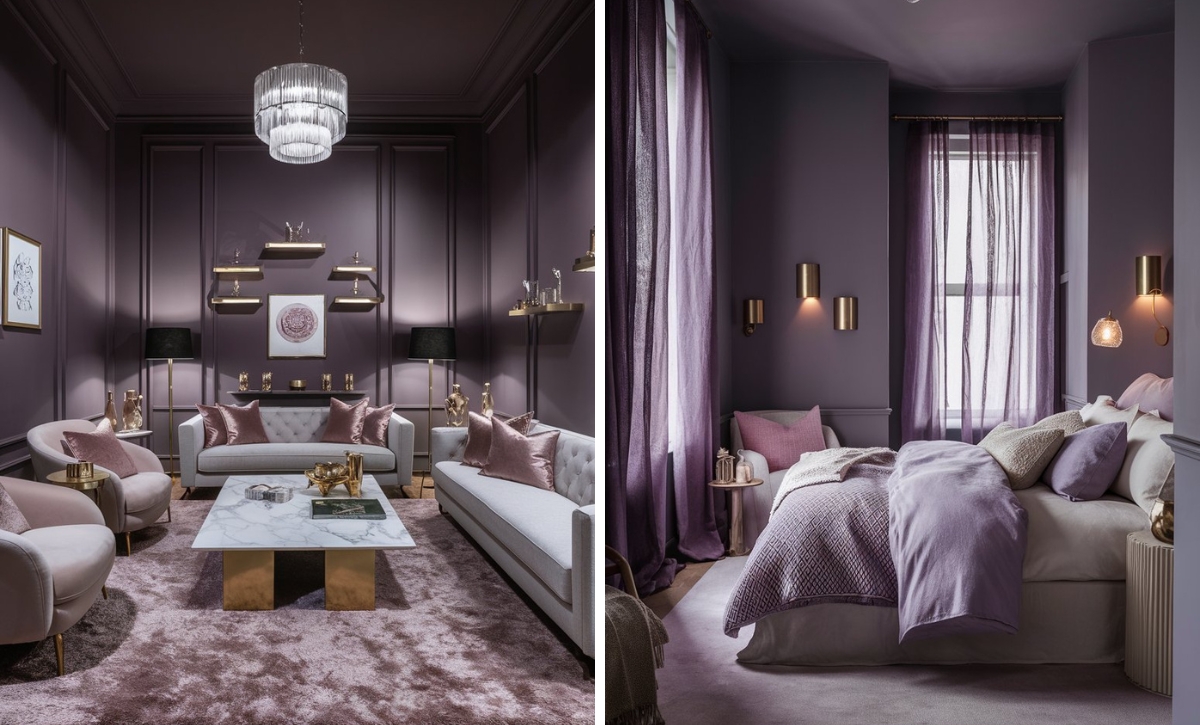“Moma” is an award-winning interior design project by Ivana Yankova, inspired by some of the most traditional elements of the Bulgarian culture.
It is using a 110 sq. m. apartment with 2 bedrooms, kitchen and living room.
The key concept of the project is made up of Bulgarian people’s perception of family and home, a symbol that is profoundly rooted in the nation’s worldviews.
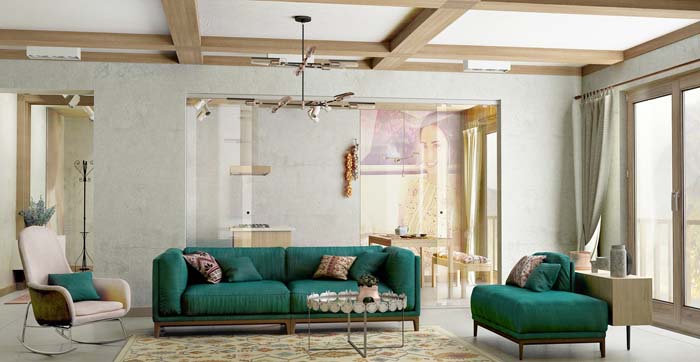
Furthermore, even though the traditional family in Bulgaria is strongly patriarchal, the mother is a symbol of the beginning; of the union of generation.
As a popular folktale says: “The man is the head of the family, but the woman is the neck that gives the direction in which to turn his head.”
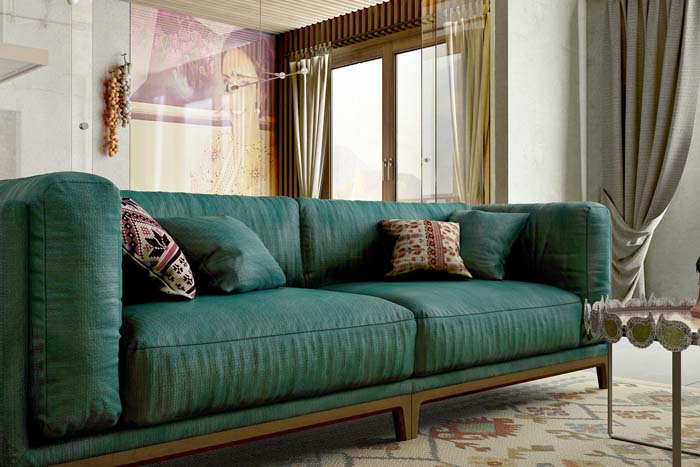
The young girl, designed as an image, is a symbol of this perception – of the feminine, of the new generation, of the new beginning. It surely does make the greatest impression in this interior.
The polished print of girls in traditional Bulgarian costumes (called “nosiya”) generates a contrast between the tradition that represents and its contemporary narration.
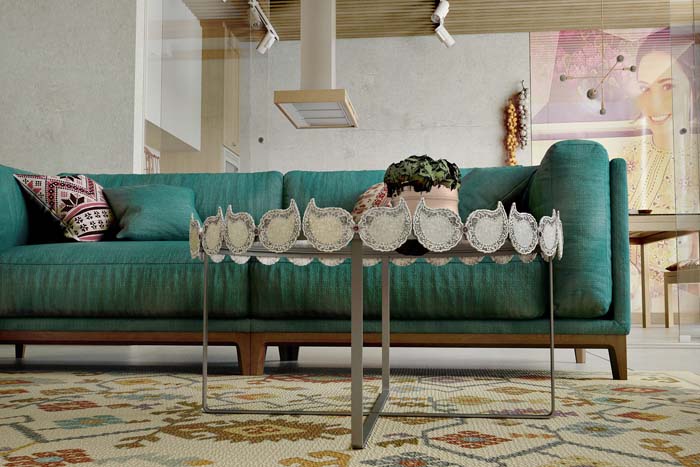
The traditional clothing, along with Bulgarian language and culture is a specific social phenomenon with a long history.
It has an immeasurable role in the nation’s folk culture and is among the most exceptional works of national art.
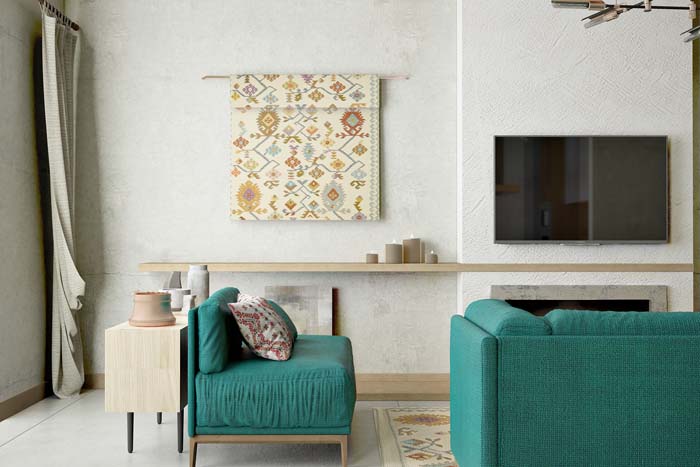
Rich artistic elements embroideries, fabrics, and metal ornaments are unparalleled cultural and historical patterns.
Similar to other countries, the traditional clothing, decorations, and ornaments in Bulgaria build up a system of symbols by which you can determine the social status of the people, his or her sex, age, and family features.
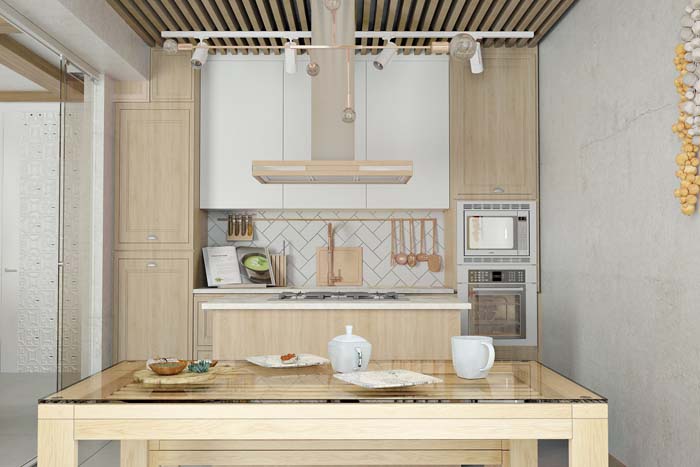
Besides, the fabrics of the Bulgarian embroidery (called “shevitsa”) are usually in vivid colors, aiming to symbolize the rich natural resources – sea, mountains, sun, infinite fields.
Another one of the most notable accents in folk costume of women is called “Pafta” or “Chapraz”, which represents decorated metal buckles used for belts and jewelry. Their mesmeric beauty is truly inspiring.
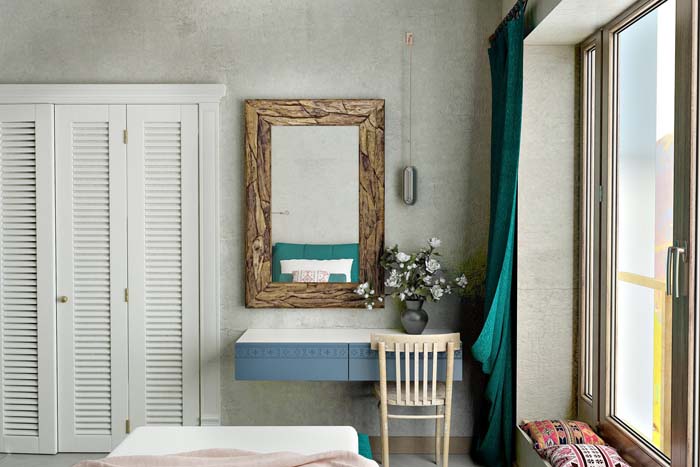
Therefore, these decorations are reproduced in the interior and create exciting accent furniture, such as coffee table and mirror in the girls’ bedroom.
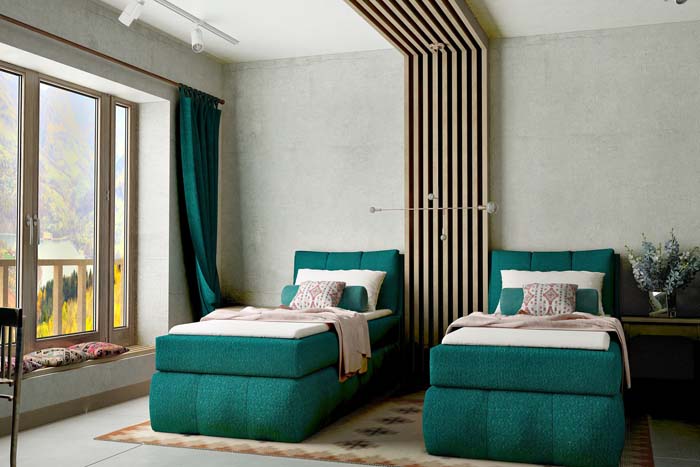
Another detail that is exemplified here, and makes a strong impression, is the so-called “Menets” – a means through which water pours.
The underlying idea is that bringing water, in the past, used to be a daily task for the young girls in the Bulgarian family.
This action has recorded in the Bulgarian culture to such an extent that might be called “ritual”.
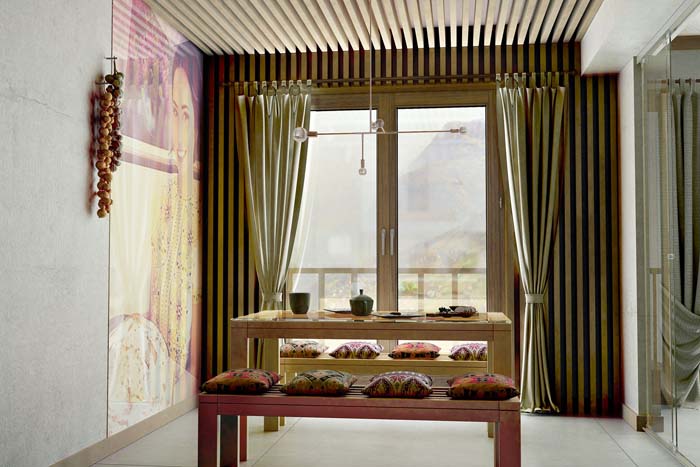
In addition to Bulgarian traditional clothing, the interior designer of this project found her inspiration in the Bulgarian traditional architecture and interior too.
Some of the components she used are the wooden beams on the ceiling, as well as the whitewashed walls and large fireplace – a constant part of the Bulgarian home in the past.
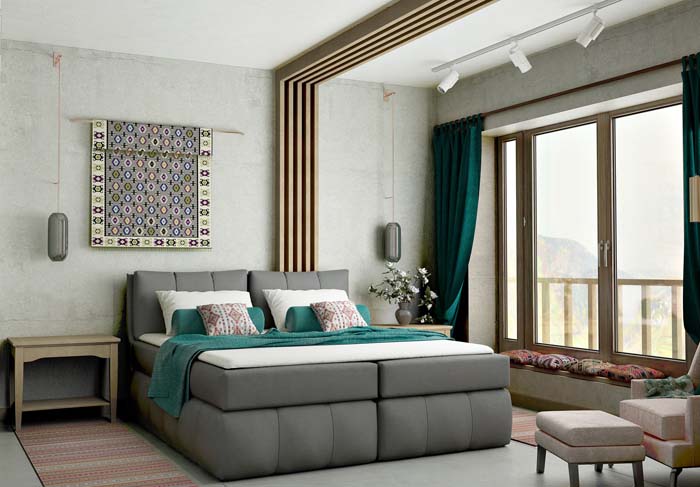
The remaining walls and flooring are minimalist, without the presence of treatment other than cement paint.
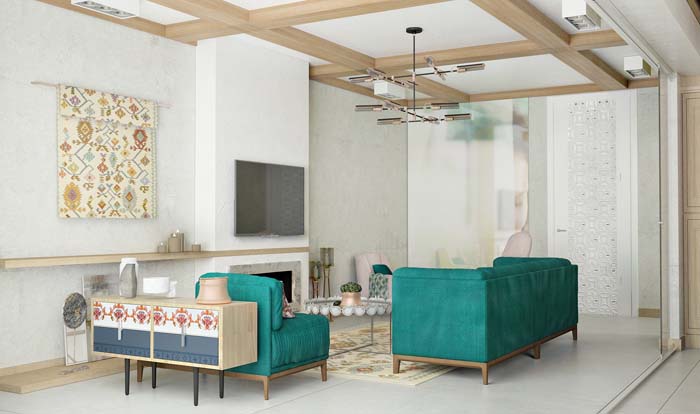
The aim is to make the link between tradition – wooden beams, the lime for the walls and ceilings; and modernism – in cement floors and walls, the presence of refined metal and glass.
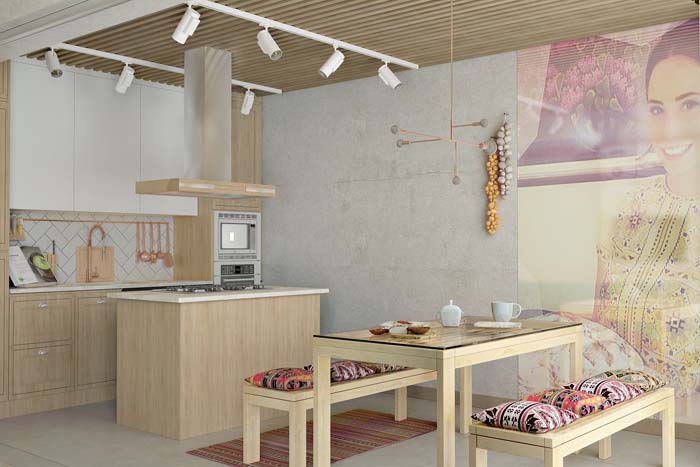
Last but not least, the Bulgarian traditional carpets and rugs in the interior she executed, are well-known as “Chiprovski kilimi“.
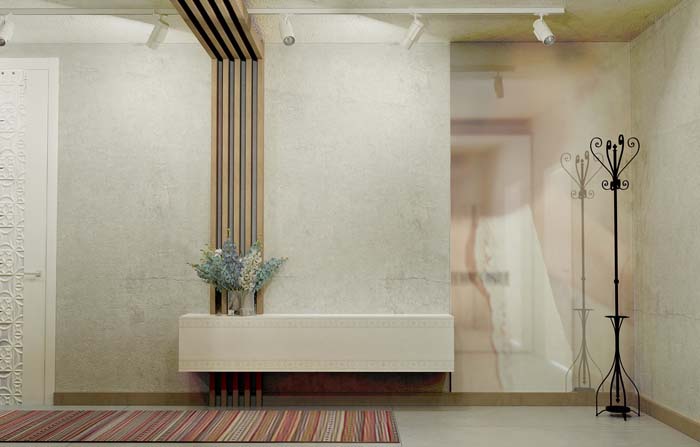
These famous carpets are globally recognized as world intangible heritage by UNESCO in 2014.
